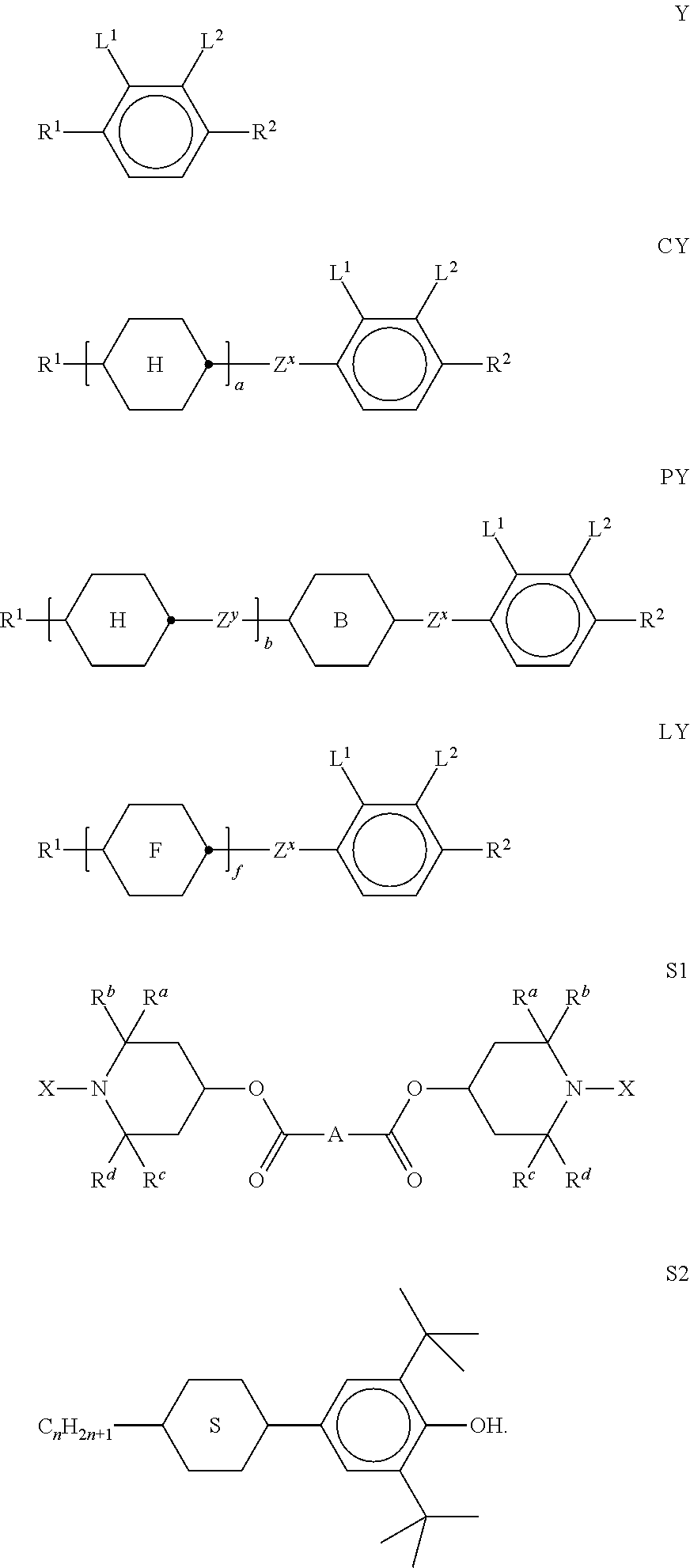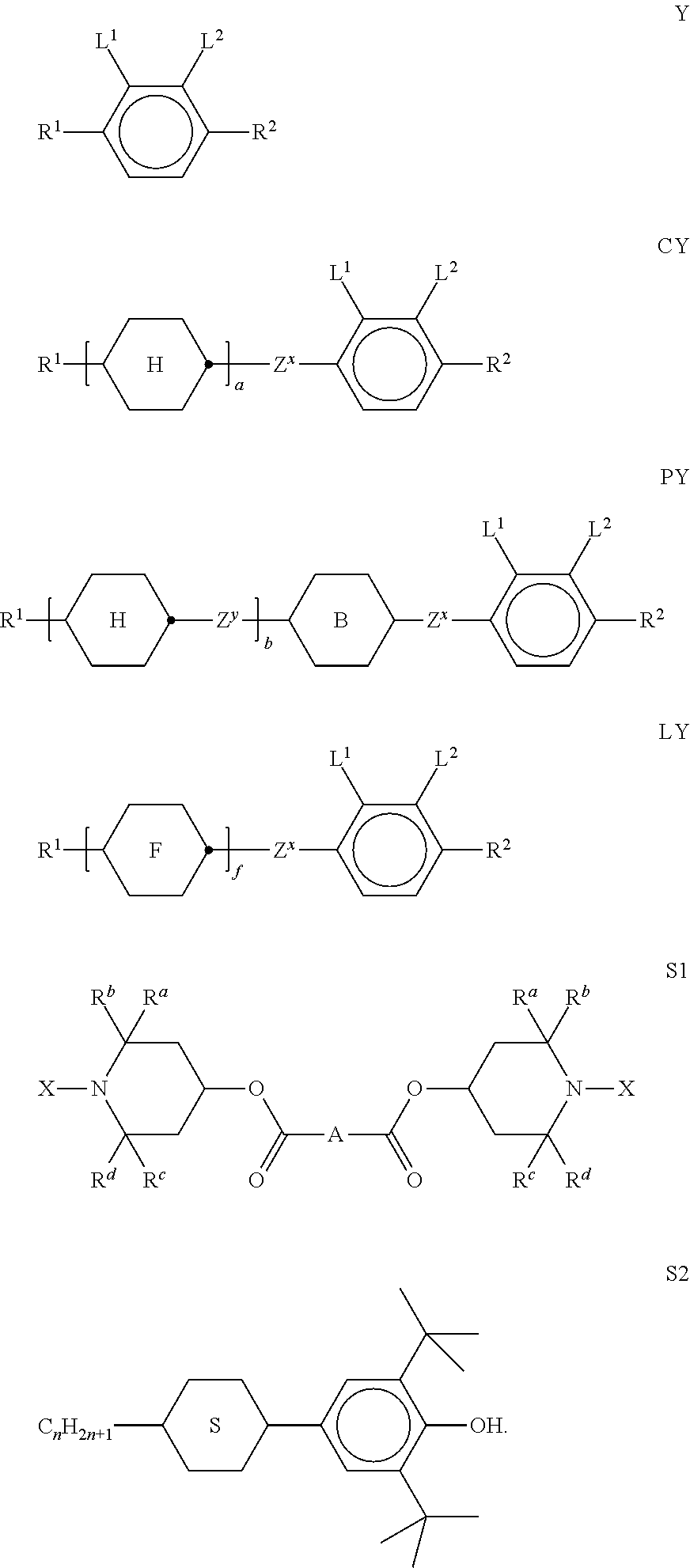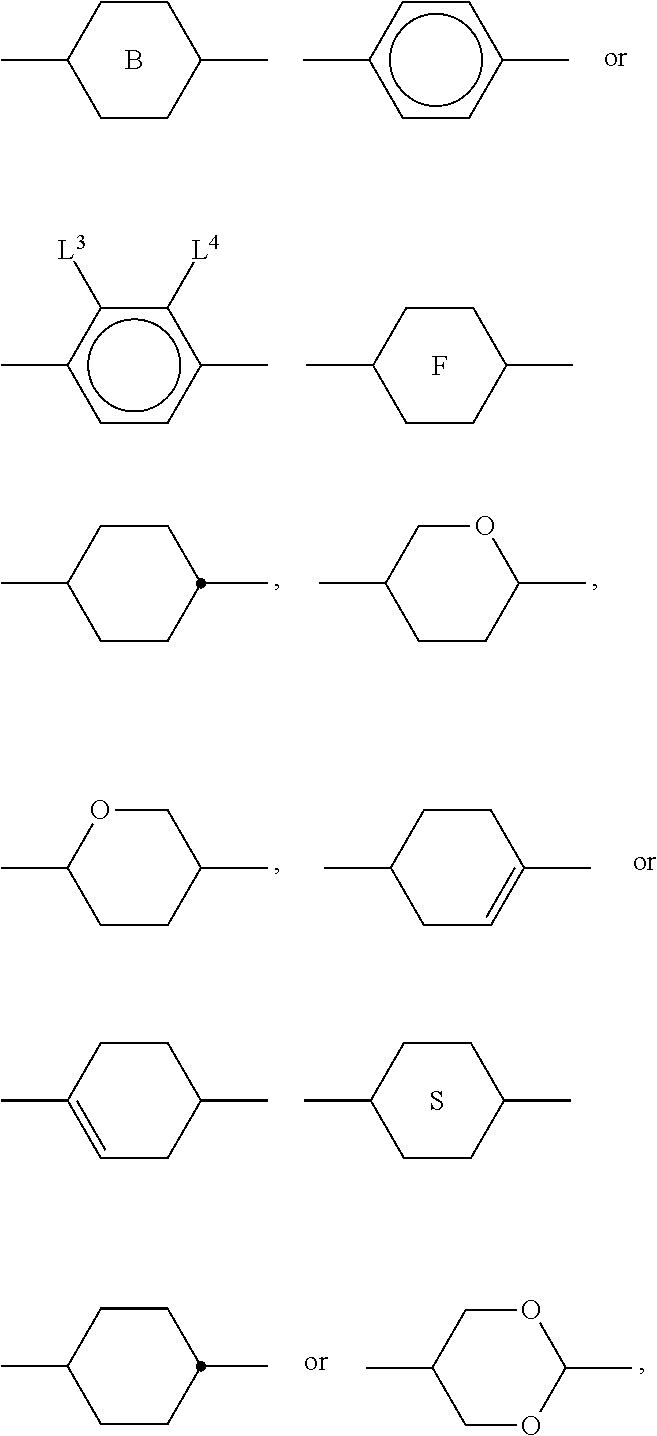Liquid-crystal medium
a technology of liquid crystal medium and liquid crystal, which is applied in the direction of liquid crystal compositions, chemistry apparatus and processes, etc., can solve the problems of difficulty in mlc display, display size, and inability to prepare optimum phases in this way, and achieve short response times, good low-temperature behaviour, and good phase properties
- Summary
- Abstract
- Description
- Claims
- Application Information
AI Technical Summary
Benefits of technology
Problems solved by technology
Method used
Image
Examples
example 2
[0428]An LC mixture with negative dielectric anisotropy is formulated as follows.
[0429]
CC-3-V23.00%cl.p.79.6° C.CC-3-V15.00%Δn0.1156CCY-3-O15.00%Δε−4.7CCY-3-O21.00%ε||3.9CCY-4-O22.50%K3 / K11.12CLY-3-O28.00%γ1133 mPa sCLY-3-O37.00%CPY-2-O210.00%CPY-3-O211.00%CY-3-O211.00%PY-3-O216.50%
[0430]To the above mixture are added 200 ppm of stabilizer S1-2a and 400 ppm of stabilizer S2a.
example 3
[0431]An LC mixture with negative dielectric anisotropy is formulated as follows.
[0432]
CC-3-V22.00%cl.p.90.6° C.CC-3-V15.00%Δn0.1063CCPC-333.00%Δε−4.6CCY-3-O16.00%ε||3.7CCY-3-O29.50%K3 / K11.18CCY-4-O29.00%γ1160 mPa sCPY-2-O210.00%CPY-3-O210.00%CY-3-O210.00%CY-5-O26.50%PY-3-O29.00%
[0433]To the above mixture are added 200 ppm of stabilizer S1-2a and 400 ppm of stabilizer S2a.
example 4
[0434]An LC mixture with negative dielectric anisotropy is formulated as follows.
[0435]
BCH-322.00%cl.p.80.1° C.CC-3-V29.00%Δn0.1051CCY-3-O17.00%Δε−4.5CCY-3-O36.00%ε||4.0CCY-4-O28.00%K3 / K11.13CLY-3-O26.00%γ1123 mPa sCPY-2-O210.00%CPY-3-O211.00%CY-3-O27.00%PY-3-O29.00%Y-4O-O45.00%
[0436]To the above mixture are added 150 ppm of stabilizer S1-2a and 400 ppm of stabilizer S2a.
PUM
| Property | Measurement | Unit |
|---|---|---|
| rotational viscosities | aaaaa | aaaaa |
| rotational viscosities | aaaaa | aaaaa |
| rotational viscosity | aaaaa | aaaaa |
Abstract
Description
Claims
Application Information
 Login to View More
Login to View More - R&D
- Intellectual Property
- Life Sciences
- Materials
- Tech Scout
- Unparalleled Data Quality
- Higher Quality Content
- 60% Fewer Hallucinations
Browse by: Latest US Patents, China's latest patents, Technical Efficacy Thesaurus, Application Domain, Technology Topic, Popular Technical Reports.
© 2025 PatSnap. All rights reserved.Legal|Privacy policy|Modern Slavery Act Transparency Statement|Sitemap|About US| Contact US: help@patsnap.com



